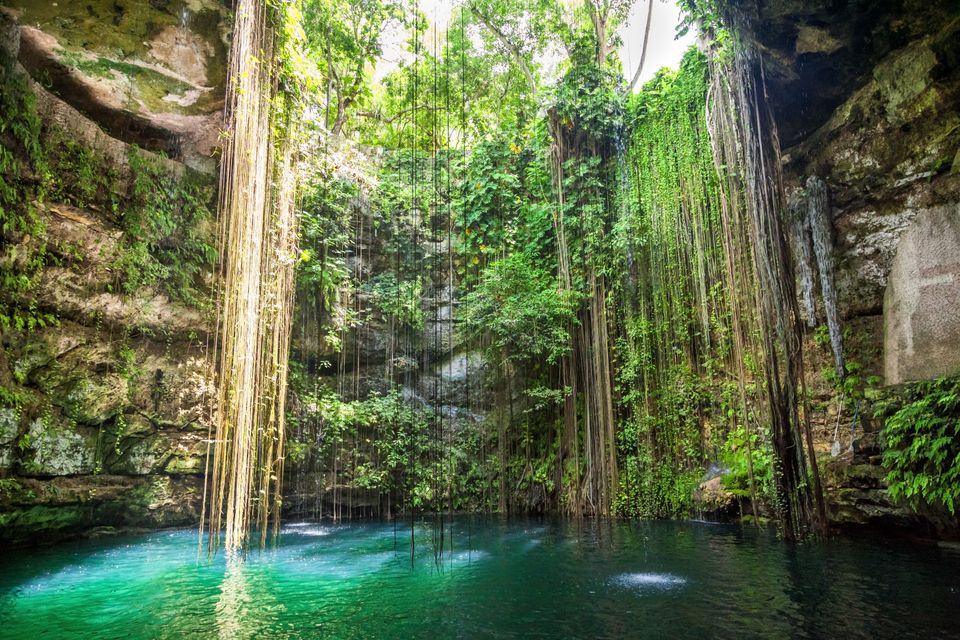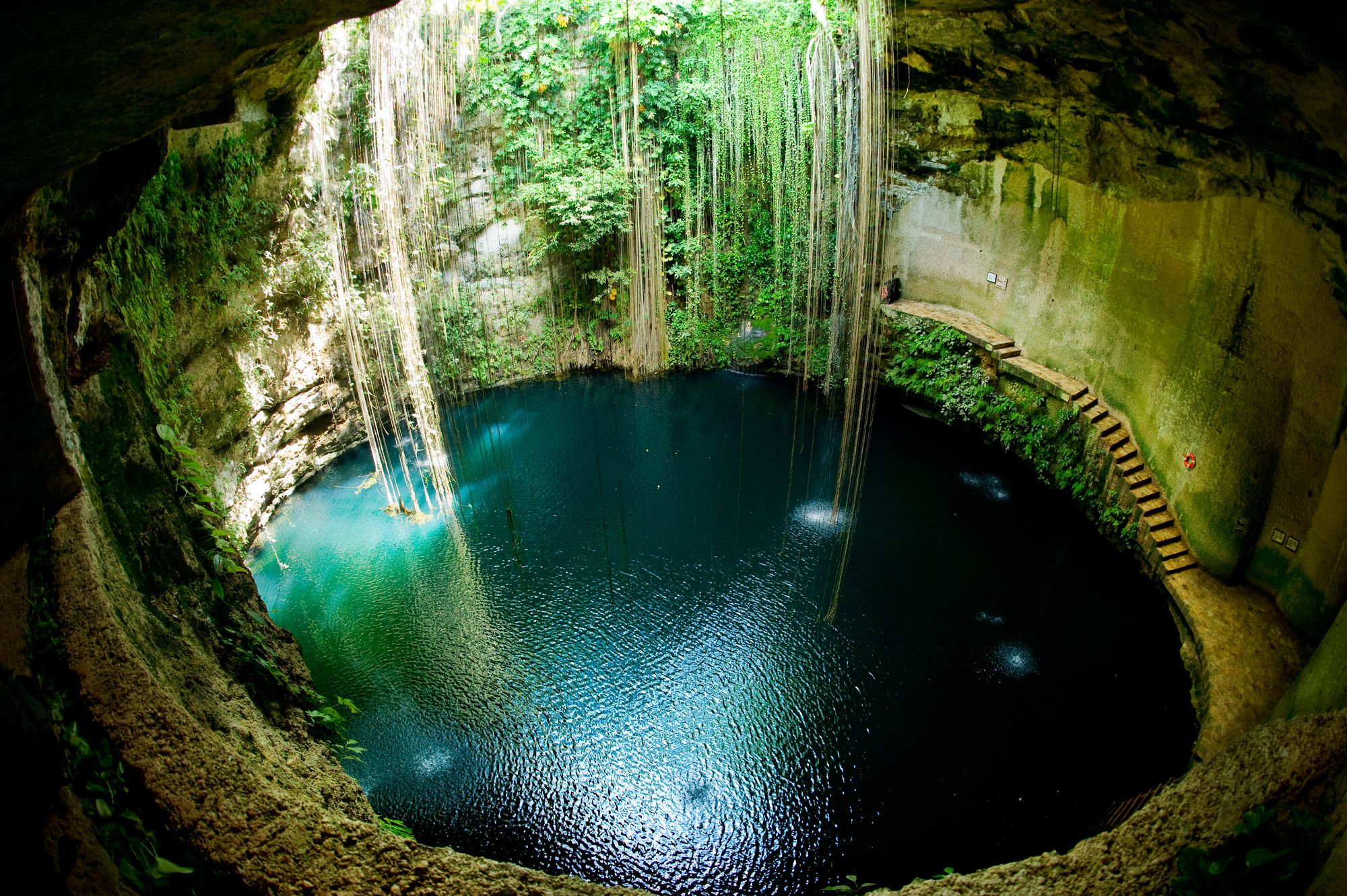Learning to Swim as an Adult - An Ongoing Journey

The waters were crystal clear and the breeze cool in the Ik Kil Cenote, a water-filled sinkhole near Chichen Itza, Mexico. Mesmerized by the cascading vines and natural beauty that surrounded us, we made our way down to the pool of water.
"Ok, then ", the tour guide said. "You have 60 minutes here. Finish your swim and meet me back there, " he said pointing to a corner.
The group nodded and not long before the Cenote was echoing with sounds of splashes and laughter. My newly found friends swam gracefully and effortlessly in the blue waters, while I, sat on the edge of the Cenote watching them. It is a sight, I remember often.

My desire to learn to swim came in little bursts of longing from incidents similar to the one above. From pools that were avoided on vacations to snorkeling trips that were passed over. From freak out moments on a jet ski to "what if I fall off this kayak" fears.
Not having learnt to swim as a child, the thought of treading deep waters as an adult was daunting. My swim journey started earnestly in my late 30s, when fitness and the urge to participate in a triathlon consumed me. Read more about my triathlon experience here.
Though, I am yet to swim my Cenote, I can swim pool laps and survive calm open waters.
The tips below are things that worked for me. With consistency and perseverance, I am positive they will work for you too.
Find a good swim coach
This is the essential first step in your journey. A swim coach will teach you technique and how to put the hands, legs, and breathing together. He/She will correct your mistakes and give you feedback on how to improve.
Places to find coaches
- Local YMCAs, Private Gyms, Parks and Recreation centers
- Recommendations from friends
- Your children's swim teachers! Be sure to ask if they teach adults
I found my swim coach at a local gym. I met her once a week and we worked on 2 strokes only in the beginning- freestyle and backstroke. Less is more in the beginning. Once you are comfortable with at least one stroke then advance to learning more.
Reduce friction
Try to find coaches or pools that are close to home or on the way to work. Pick a time of the day which will work best for your family schedule. These small steps will reduce the demand on your willpower. My gym was 10 minutes from my house and I swam in the mornings when the rest of my family was asleep.
On days that my mind came up with (very) good excuses as to why I should skip my swim session, I told myself one (or all depending on the day) of the 3 things below -
- " The gym is literally 10 minutes away."
- "You paid money for these sessions."
- "You have never regretted a session you showed up for."
Come up with your 'convincers' and have them handy. Demands of work and family life will test your resolve but if you are ready with counter arguments, you will win (majority of the time anyway).
Watch videos online
I found it helpful to watch swim videos to understand nuances of technique that were unclear. These videos were a great add-on to my weekly in person instruction.
Free options - Plenty of Youtube videos. I followed the Global Triathlon Network - swim videos.
Paid Option - Goswim.tv
Consistency is your friend
This was key in my progression from barely floating to being able to swim full laps. Have a consistent routine for your practice sessions. I was getting to the pool at a minimum 2 times a week - one for my swim coach session and the other a solo practice session. More on that below.
Practice on your own
While the in-person sessions with the coach were valuable, swimming on my own during the week accelerated my learning.
I applied what the coach taught me and also figured out what was working during these sessions. On my coach days, I asked her how to fix the things that didn't work during my practice sessions.
The practice sessions also started building my confidence of being in the pool by myself. I swam in the shallow end till I got more comfortable.
Try fins and buoys
These were useful tools that helped me feel more confident in the water.
- Fins and buoys allowed me to focus on my stroke without having to worry about my legs sinking. They gave me a feeling that I was 'finally getting it'.
- It was fun going faster than my usual turtle speed.
- A word of caution - don't use these tools all the time. They are accessories to learn the technique. Practice with and without them.
Learn to tread water
Treading is an essential skill for deep water. It helps you stay in a vertical position and keep your head above the water, when you get tired. I learnt this essential skill very late in my swim journey. I am a lot more confident jumping into a 13 feet pool, now that I know this skill.
Jump in the deep - often
Once you are a little more comfortable in water do jumps with your swim coach. I am currently working on this. This is helping me overcome my fear of jumping into deep water and practice my treading - both essential skills for my future Cenote swim.
Be Kind to Yourself
I have realized as adults we tend to be extra hard on ourselves. Our education system and society have trained us to think that if we don't get it immediately or within 2-3 classes then we are too stupid, too old, too out of shape etc etc.
Ignore that voice when it comes. And it comes up a lot.
Similar advice goes for the body shaming voice, if that comes up for you.
Stick with it
There were many times I wanted to give up.
- When I had water up my nose all the time
- When I was paralyzed by fear, if my feet didn't touch the bottom
- When it was just plain hard
Feel what you are feeling but keep showing up. If you put in the work, I promise - one day your body will float and you will be swimming in your Cenote, wherever that is for you.





Comments ()